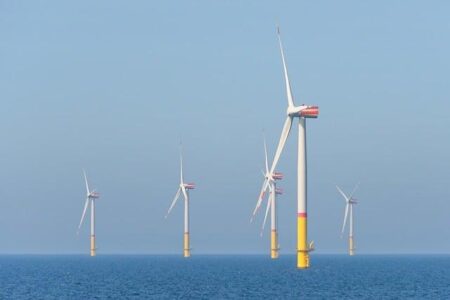As tensions in Eastern Europe continue to reverberate across global energy markets, Turkey faces a critical test of its energy strategy. Traditionally reliant on Russian supplies to fuel its growing economy, Ankara now finds itself navigating a complex balancing act amid geopolitical pressures and shifting alliances. This article explores the challenges and opportunities Turkey encounters as it seeks to reduce dependence on Russian energy, while maintaining economic stability and securing its energy future.
Turkey’s Energy Dependency on Russia and the Risks Ahead
Turkey’s energy landscape is intricately tied to Russian supplies, making it highly vulnerable to geopolitical turbulence. Nearly half of the country’s natural gas imports flow through pipelines sourced from Russia, underpinning its domestic energy consumption and industrial output. This dependence exposes Turkey to considerable risks, including price volatility, supply disruptions, and political pressure-factors that could destabilize its economy and energy security. Moreover, the complex web of contracts and infrastructure investments reinforces this reliance, limiting Ankara’s immediate options for diversification without significant economic or diplomatic costs.
Analysts warn that the risks do not end with supply shortages. Turkish industries and households may face rising energy costs, which could fuel inflation and dampen growth. To mitigate these dangers, Turkey is exploring alternative energy routes and sources, focusing on renewables, LNG imports from other countries, and regional energy partnerships. However, transitioning away from Russia presents obstacles such as infrastructure gaps, higher procurement costs, and geopolitical pushback. Below are some key risks Turkey must navigate:
- Disruptions due to escalating political tensions
- Sudden spikes in energy prices impacting industries
- Limited alternative pipeline capacity in the short term
- Economic pressure from contractual penalties and supply obligations
| Energy Source | Share in Turkey’s Energy Mix (2023) | Potential for Expansion |
|---|---|---|
| Russian Natural Gas | 45% | Low (due to political dependency) |
| Liquefied Natural Gas (LNG) Imports | 25% | Medium (infrastructural constraints) |
| Renewable Energy | 20% | High (government targets) |
| Domestic Coal and Oil | 10% | Low (environmental concerns) |
Exploring Alternative Energy Sources to Secure Turkey’s Future Supply
Turkey’s energy landscape is undergoing a crucial transformation as the country seeks to reduce dependence on Russian imports. In this shifting panorama, renewable energy sources have emerged as pivotal players. Investments in wind, solar, and geothermal power are intensifying, buoyed by Turkey’s abundant natural resources and government incentives encouraging clean energy adoption. The government’s strategic energy roadmap highlights ambitious targets, including raising the share of renewables in the energy mix to over 38% by 2023. This push not only aims to bolster energy security but also aligns with global commitments to reduce carbon emissions, making Turkey’s energy future both sustainable and resilient.
Despite these promising developments, challenges remain in scaling alternative energies to meet the country’s growing demand. Infrastructure modernization, grid reliability, and investment inflows continue to be focal points for policymakers and industry stakeholders alike. Key growth areas include:
- Wind power: Exploiting the coastal and mountainous regions for consistent wind currents.
- Solar energy: Leveraging Turkey’s high solar irradiance, especially in the southern provinces.
- Hydroelectric and geothermal plants: Utilizing existing water resources and volcanic activity.
| Energy Source | Potential Capacity (GW) | Current Share (%) |
|---|---|---|
| Wind | 30 | 10 |
| Solar | 35 | 8 |
| Geothermal | 5 | 3 |
Policy Recommendations for Reducing Reliance and Enhancing Energy Resilience
To move away from heavy dependence on Russian energy imports, Turkey must pursue a multifaceted strategy focused on diversification and sustainability. Prioritizing the expansion of renewable energy sources-such as solar, wind, and geothermal-will not only reduce vulnerability to external shocks but also align with global climate commitments. Strengthening energy efficiency across industrial, residential, and transportation sectors can ease demand pressures, buying critical time for infrastructure upgrades. Moreover, strategic investments in liquefied natural gas (LNG) terminals and interconnections with alternative suppliers in the Mediterranean and Central Asia will broaden Turkey’s energy sourcing options.
Key policy measures should include:
- Incentivizing private sector participation in renewable projects through subsidies and tax breaks
- Enhancing cross-border energy grids to facilitate regional energy trade
- Implementing stricter building codes emphasizing energy conservation
- Promoting research and development in green hydrogen and energy storage technologies
| Policy Area | Expected Impact | Timeframe |
|---|---|---|
| Renewable Capacity Expansion | Reduce fossil fuel share by 30% | 5 years |
| Energy Efficiency Programs | Lower national consumption by 15% | 3 years |
| Gas Supply Diversification | Increase LNG imports by 25% | 4 years |
In Conclusion
As Turkey seeks to navigate the complexities of its energy needs amid shifting geopolitical landscapes, the question of reducing dependence on Russian supplies remains a critical challenge. While diversification efforts are underway, Ankara’s ability to secure affordable and reliable alternatives will be pivotal in shaping its economic and strategic future. The balancing act between maintaining strong ties with Russia and pursuing energy independence continues to test Turkey’s diplomatic and policy agility in the months ahead.




